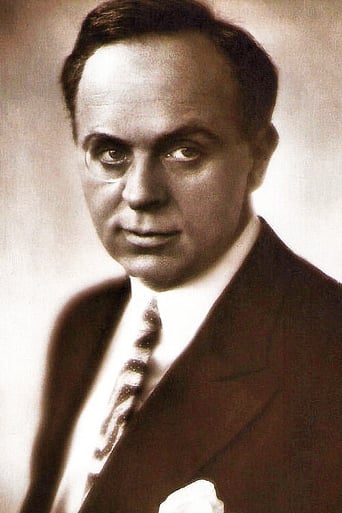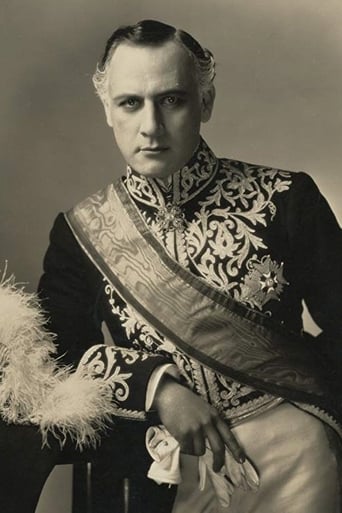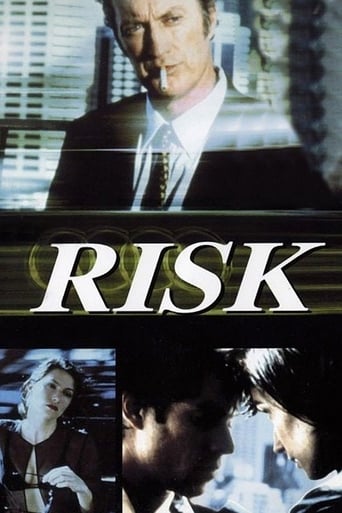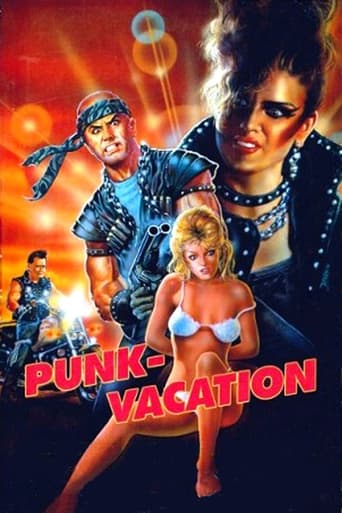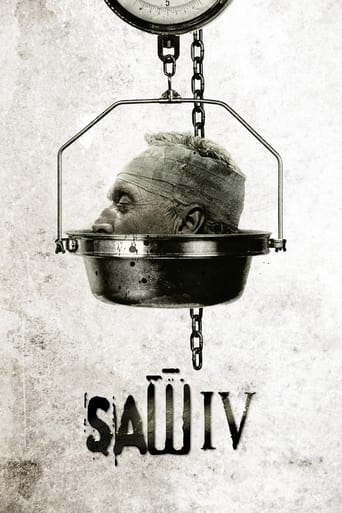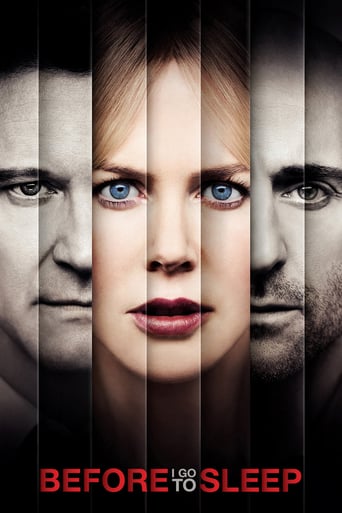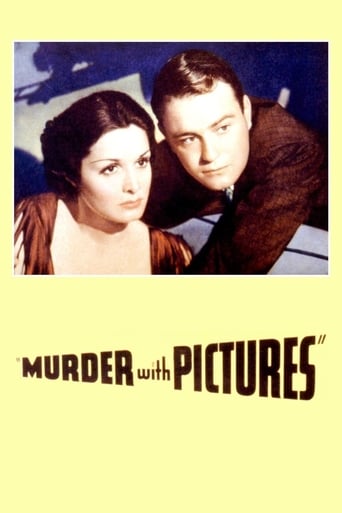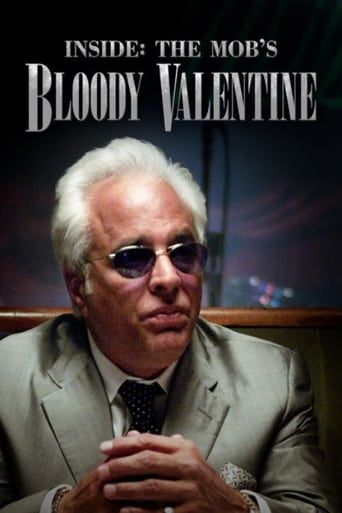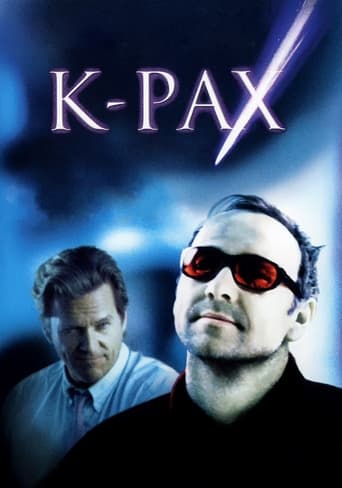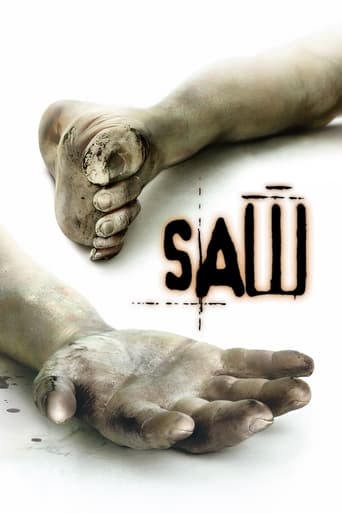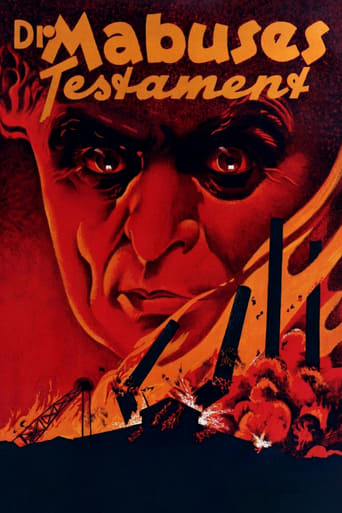

The Testament of Dr. Mabuse (1943)
After a detective is assaulted by thugs and placed in an asylum run by Professor Baum, he observes the professor's preoccupation with another patient, the criminal genius Dr. Mabuse the hypnotist. When Mabuse's notes are found to be connected with a rash of recent crimes, Commissioner Lohmann must determine how Mabuse is communicating with the criminals, despite conflicting reports on the doctor's whereabouts, and capture him for good.
Watch Trailer
Cast


Similar titles
Reviews
Sometimes a book or a movie gets more praise than it deserves because it was banned somewhere. And what could be better for a movie than to have been banned by Joseph Goebbels himself, the Minister of Propaganda in Nazi Germany! Other than that, there is no explanation for why anyone thinks this movie is any good.If "Dr. Mabuse: The Gambler" (1922) was over the top, "The Testament of Dr. Mabuse" is absurd. The title character went insane in the first movie and was confined to an insane asylum. Then, Hofmeister, a criminal who once was a police detective, but was cashiered for bribery, goes mad out of fear of Dr. Mabuse. By the end of the movie, Dr. Baum, who runs the asylum, goes mad as well and has to be confined. But it does not stop there. The plot is so outrageous as to make one think the movie itself was produced by a madman.For starters, while Dr. Mabuse is in the insane asylum, he still manages to run a criminal organization, planning crimes down to the last detail. His motives are as mad as he is. Whereas in the first movie, he simply wanted power and the pleasure of manipulating the lives of others, in this movie he wants to drive the whole world mad by getting people hooked on drugs, which he supplies for free, and by causing so much terror and destruction that civilization will collapse, leaving nothing behind but crime as a way of life.Mabuse communicates with his henchmen by willing his thoughts onto a record, which plays when he so wills it, while a cardboard image of himself sits behind a curtain, casting a shadow. Do you dare ask how this curtain, cardboard image, and record player came to be set up in this room where criminals go to get their orders when commanded to do so by a piece paper with a typewritten message on it? Why, Mabuse just wills it all into place!Things get a little easier for Mabuse when he dies and wills his spirit into Dr. Baum, so now he has another body to occupy that can leave the asylum. But he loves the record gimmick so much that when Dr. Baum wants his servant to think he is in his quarters, the record player is turned on whenever someone wiggles the door handle, causing it to play the message, "I do not wish to be disturbed."Kent, a man who killed his girlfriend and her lover and went to prison for it, is forced by economic circumstances into Mabuse's criminal organization. Together with Lilli, the woman he loves, he decides to go straight. But before he can make it to the police station, he and Lilli are captured and brought to the room with the curtain, the cardboard image, and the record player. After the door is locked behind them, the record tells them they will never leave the room alive. Eventually, Kent and Lilli pull back the curtain and discover the setup. Then they hear ticking, the sound of a time bomb. What better way to have a couple of people killed than to blow up your own headquarters! But when you can will yourself into another body, will your thoughts onto a record, will your thoughts through a typewriter onto a piece of paper, and will an entire setup consisting of record player, curtain, and cardboard image, and finally will a time bomb into existence as well, then I suppose it is child's play to will the whole setup into existence somewhere else after you destroy it with that time bomb just to kill two people.But all is not lost. We can tell ourselves that this movie was an attempt by Fritz Lang to warn us of the danger of Adolf Hitler and that will make the movie profound somehow.
What it is, is a slam-bang mystery/action movie that gets off to a sluggish start and winds up in a spasm of explosions and pursuits. Not a masterpiece, it still excels for its time in special effects and the visual imagery, not to mention the good doctor's moral nihilism.It's Dr. Mabuse's "testimony" because he dies in an insane asylum near the movie's beginning. However, the guy is a genius and through some sort of posthumous hypnosis or teleportation or transmogrification he manages to infect the mind and soul of the asylum's chief. The chief then carries out Mabuse's plan. It's a simple plan. He's going to destroy the earth because everything is too corrupt to continue its existence. He could be running for president in 2016l.It is a bit slow at the beginning. It's shot as a silent movie with exaggerated expressions and gestures used as a substitute for dialog. Once it achieves flight speed it turns into an interesting mystery with some exciting scenes. Especially memorable is an hallucinatory car chase along an infinitely long highway through overarching trees that are illuminated only by headlights.The only truly noticeable performance is by Otto Wernicke as Inspector Lohmann, the police detective investigating the mysterious murders. His character is coarse and unlikable but he brings life to the role, whereas the others are more or less doing their jobs. There's an innocent young woman involved, Wera Liessem, who lacks whatever "sex appeal" means. A bit player, Ludwig Stössel, went on to a reasonably successful career as a character actor in Hollywood.It's been claimed, by Lang among others, that this was a propagandistic tract aimed at Naziism. It was released the year Hitler came to power. But who knows what went on in anyone's mind in Germany of that era? The country had just suffered a major bout of hyperinflation. The mark-dollar exchange rate rose from 4.2 to one in 1914 to a peak of around 4.2 trillion marks to the dollar by November 1923. At its height, prices were rising so fast that waiters had to climb on tables to call out new menu prices in restaurants every half hour. And the economy was still in the grip of a severe depression. Hitler hadn't yet turned into Mabuse.
The Testament of Dr. Mabuse is something that one might not expect in the catalog of work by the towering figure in German cinema, Fritz Lang. The film is, actually, a sequel. Or, correctly, the second part of what is in retrospect a trilogy (it ended with 1,000 Eyes of Dr. Mabuse, which ended up being the director's final film). It concerns the title character, who in the first film - arguably the first 'crime epic' as at four and a half hours - chronicles in expert detail how a madman takes over a German city with his hypnotic powers of criminal influence.That film as well as this sound-era follow-up, the latter of which got banned by Goebbles for supposed influence on the public (and no wonder with its 'Mystery Voice' of influence, but more on that in a minute), are not exactly "high art." On the contrary, I think Lang would readily admit these are popular works of art, inspired initially by a pulp serial. Indeed watching this film in particular I can't help but think with its swath of criminals under a madman's "testament" and spell (particularly after his demise) and police force inching closer and closer to discovering the secrets of this man's plan, that all it's really missing is Batman. Matter of fact, it wouldn't surprise me a bit to discover that, one way or another, Bob Kane or Bill Finger didn't watch this (or the original bad-ass 1922 epic feature) to inspire Gotham just a bit.In this world, people are desperate. It's hard not to see it as Lang shows a flashback of one of the employment-desperate criminals, who has one little spot of hope with a woman who loves him practically unconditionally (or maybe she's one of those 'I can change this Bad Boy' types, but I digress). These were tough times, and people might just decide to turn to crime as those jobs weren't available - or, as Goebbles might have picked up on, the desperation of the German people to Follow The Leader so to speak. For most of the film we don't know who is this Man Behind the Curtain (literally!) who delivers orders and demands to the criminals that they must carry out; mostly, it seems, involving a jewel heist worth hundreds of thousands.It's curious that Lang casts/repeats the same character and actor from *M*, not the original Dr. Mabuse silent film, Captain Lohmann, for this film. Perhaps it's a crossbreed then of sequels, which is rare for any director to attempt: the same man who caught that child killer played so notoriously/well by Peter Lorre would return to find out this "Testament" era of Dr. Mabuse. We only see a little of Mabuse anyway... in *living form* that is. He scribbles notes and delivers them from his room, somehow. Of course I wouldn't dare reveal too much - yes, even for a film that is over eighty years old - but how it is actually getting out to the criminal elements are devilishly clever, if maybe, just a little, obvious.But Lang is dealing in clichés here and having so much fun doing it. And his filmmaking is one of two modes and always so pleasurable to watch: either he's patient, waiting with his shots as the silent film master that he was, taking in actors' movements, usually when they talk right at the camera/the audience, OR he exercises his action-film chops with plenty of energy, particularly in the first act when we see a man who becomes surrounded by some of Mabuse's "minions" (which may involve a barrel full of explosives), and then in the climax which involves a chase and a man driving a car in a complete daze. Lang takes his time with his pulp, and milks moments for all they are worth. Of course watching bits like the one criminal and his girlfriend Lillie is a little dated (just how, you know, unconditional she is in her love), but you can take that with a grain of salt hopefully.What's so striking here is how Lang gets this cops vs criminals thing down so well; he did it before in the first segment, and one wonders going in if there will be enough time to develop all of this. But this time it works so ingeniously because it's the crazy aftermath of Dr. Mabuse's reign (spoiler: he dies halfway through the film). So that his influence is practically supernatural, as he appears to characters as a crazy apparition, with eyes bugging out and a a face in crazier contours. It's this kind of scene that just by itself will make your hair rise. In the rest of the story... it makes sense, sort of. The acting matches the intensity of the action, and makes for a helluva potboiler. This is a filmmaker making a point about the terror and horrors of crime - and, of course, what a simple voice can do for easily impressionable people in dire straits - while having a lot of fun, in his own diabolical way. It dwells in the darkness of the human soul...Again, like Batman.
The first thing that literally Jumps out at the Viewer while watching this 1933 Movie is that Visually it doesn't look like a 1933 Movie. The Contrast and the Sharpness are Breathtaking. This is just the beginning of the Enhanced and Surprising Experience that is Mabuse.It is also no Wonder that this Film is one of the most Lauded and Praised of Early Foreign Cinema. Another of those German Expressionisms that You hear so much about. All the while Hypnotized by its Stylism, the Pulp/Sci-Fi/Horror/Crime Amalgamation unfolds, the Viewer is Entranced by a Grandiose Vision of the Director and Dr. Mabuse.Evil is Portrayed as a Hybrid of Matter and Spirit, perhaps taking some of the Blame and placing it in the Realm of the Supernatural. But Criminal Masterminds and Tyrannical Dictators do behave as though there is some sort of Possession, whether it be Self-Imposed Megalomania or Directed from the Pits of Hell, does it really matter? The resulting Devastation is the same.The Film Wavers between Slam-Bang, Enthralling Entertainment and Political Posturing Stimulating Thought and, perhaps Action from its Audience. The Latter most likely the reason the Nazis banned the Movie and Fritz Lang said Goodbye to Germany, His Native Land. The Film remained Lost and Butchered for quite a while, but it is back now, completely Restored and Looking as Good as Ever, and what a Sight it is.


